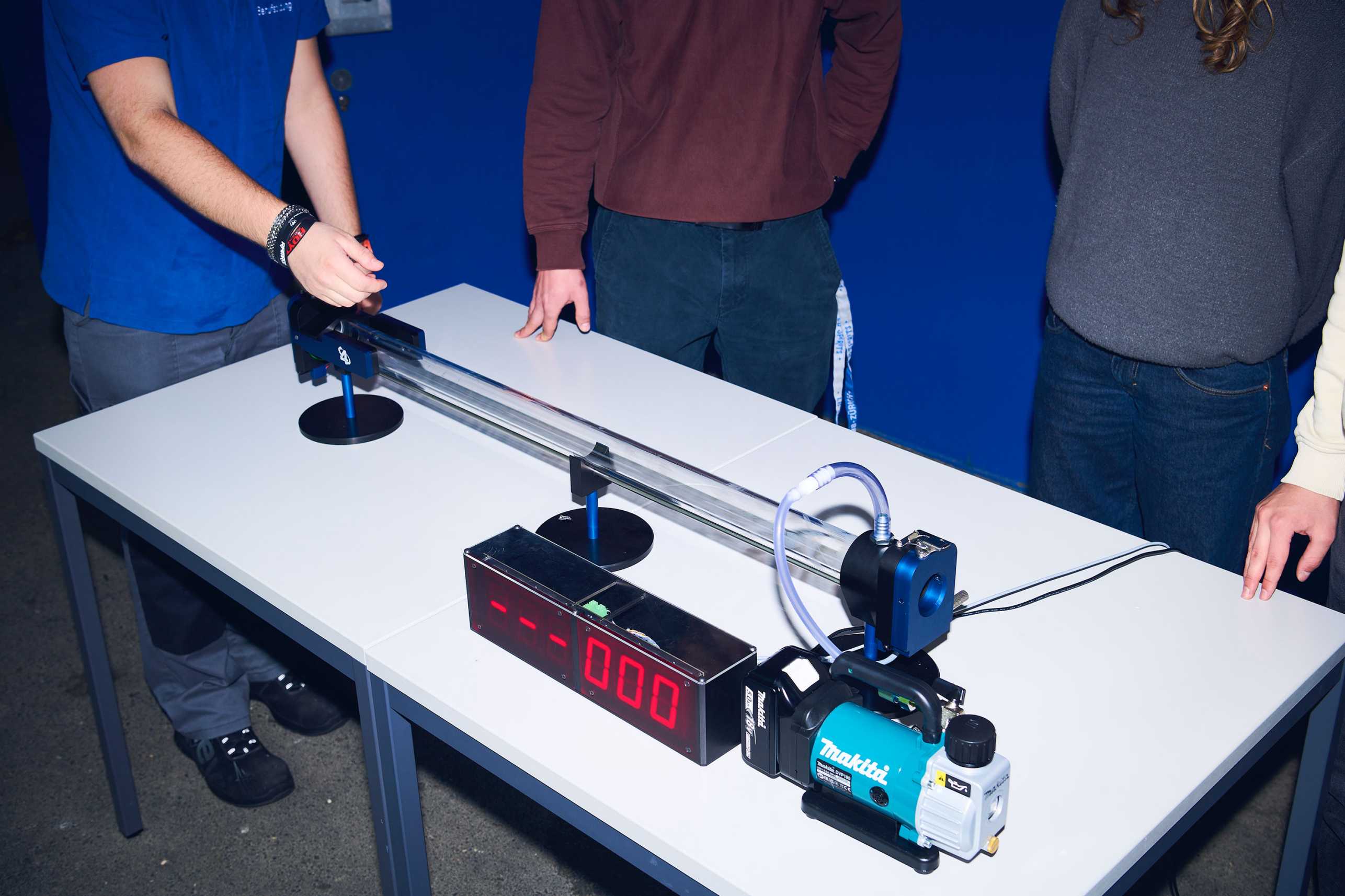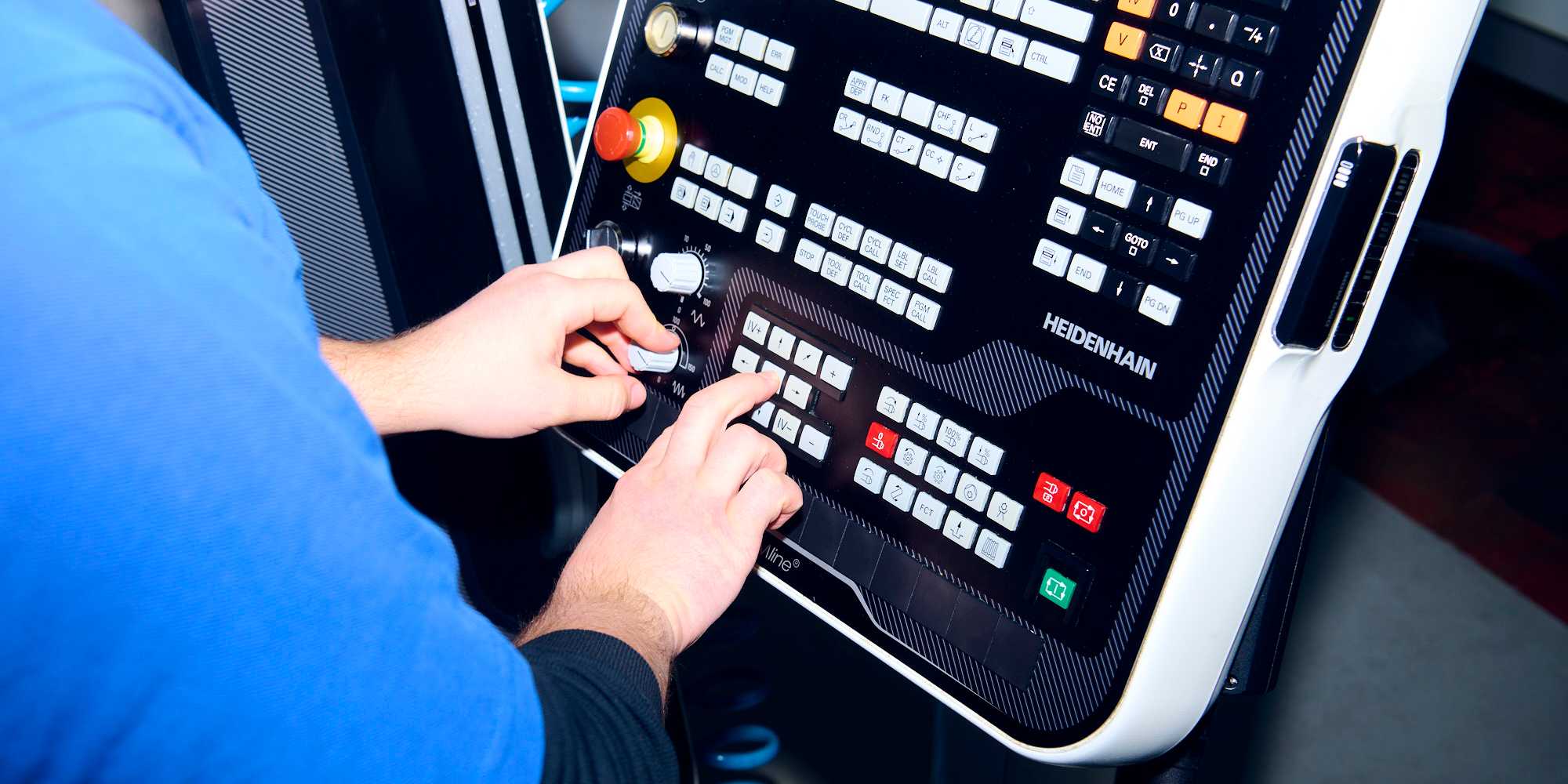
Achieving their goal
Ten students from the Department of Physics gained new experience in the Physics4mation project. It was an exciting and eventful time for them with positive results.
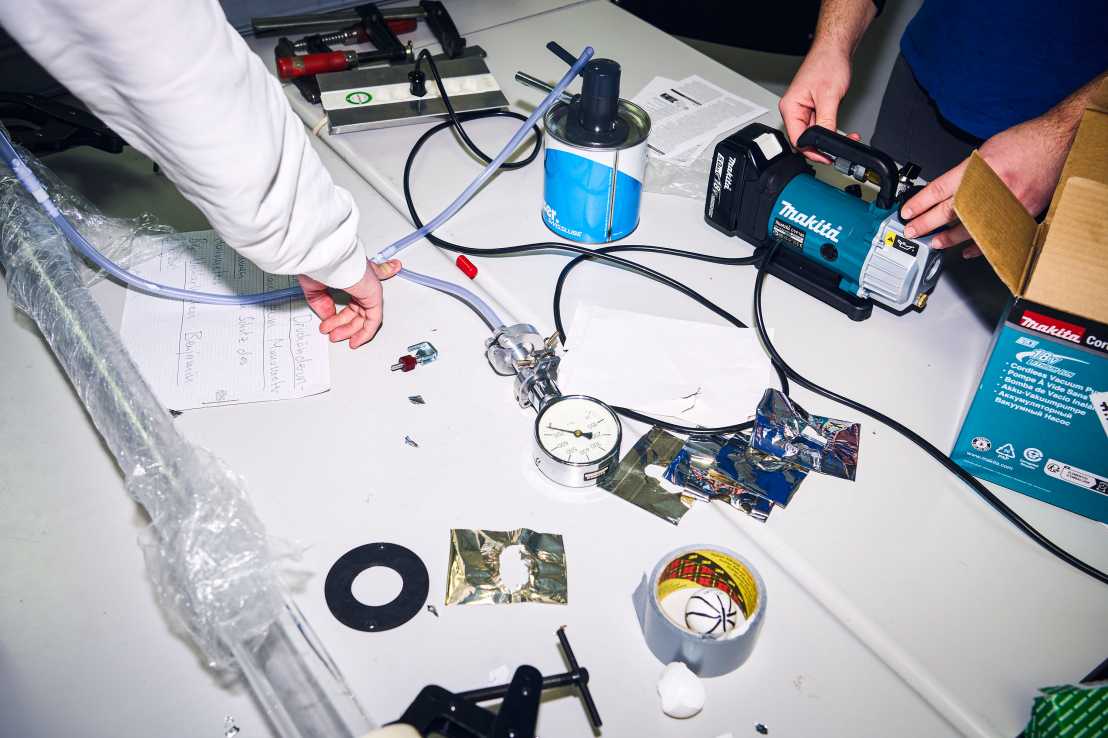
Following its successful premiere last year, the Physics4mation project was carried out again. Two teams, consisting of apprentices from the various apprenticeships in the Department of Physics, realised interactive exhibits for the careers fair. In doing so, they gained experience in project management and building networks.
One team decided to build a vacuum cannon that shoots a ping-pong ball into a collecting net. It was made up of Laurin, a third-year apprentice design engineer; Benjamin, a fourth-year apprentice physics laboratory technician; Salvatore, a third-year apprentice polymechanic; and Mia and Simon, both second-year apprentice electronics technicians. Laurin took the lead, partly due to his profession.
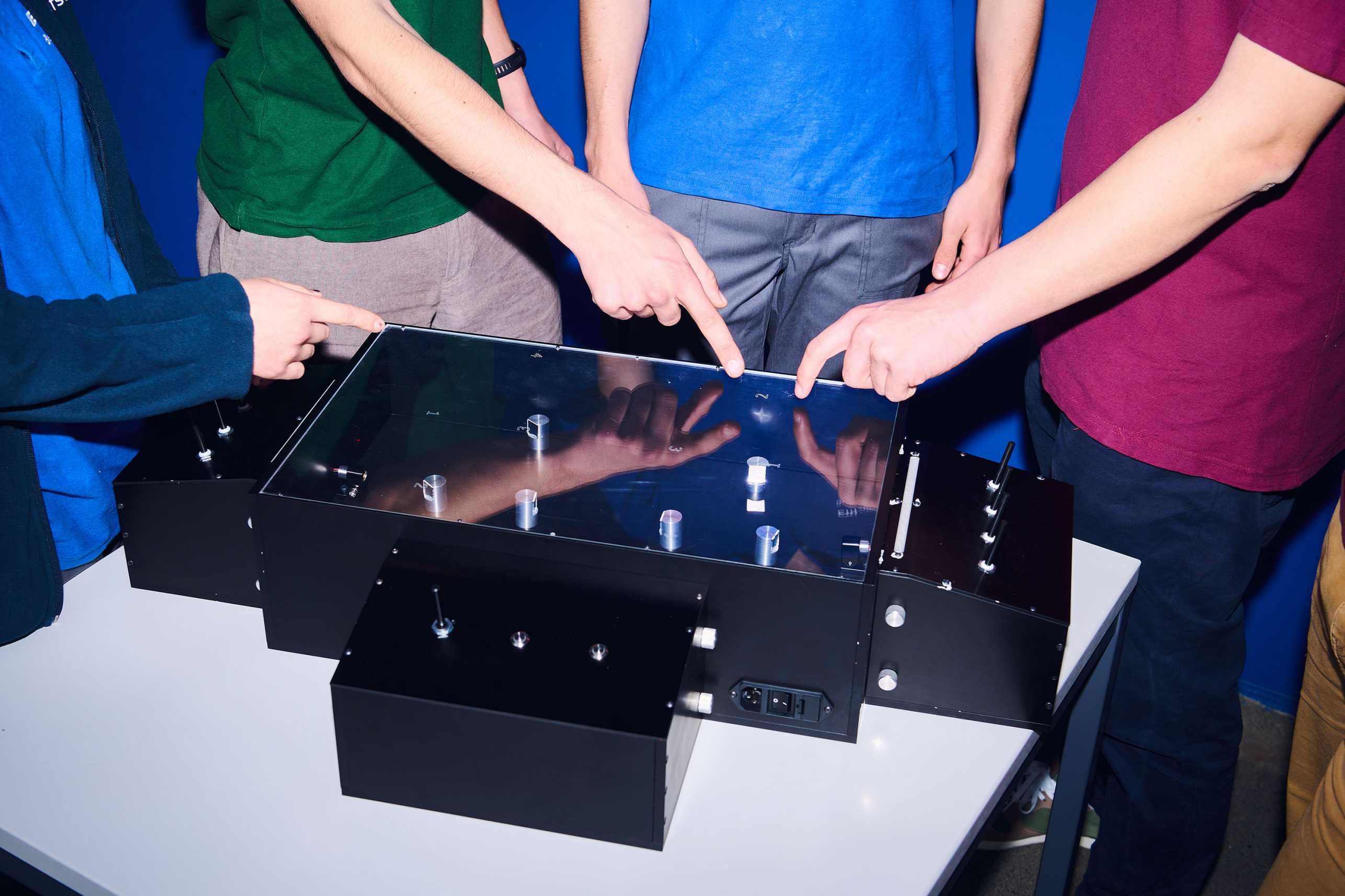
The other team decided to realise a laser duel. Two players compete against each other and have to direct a laser beam via mirrors into a target within a time limit. This team consisted of Jonas, a third-year apprentice polymechanic, who was also the team leader, Inhzu, a first-year apprentice polymechanic, Andri, a fourth-year apprentice physics lab technician, Julian and Manuel, both second-year apprentice electronics technicians.
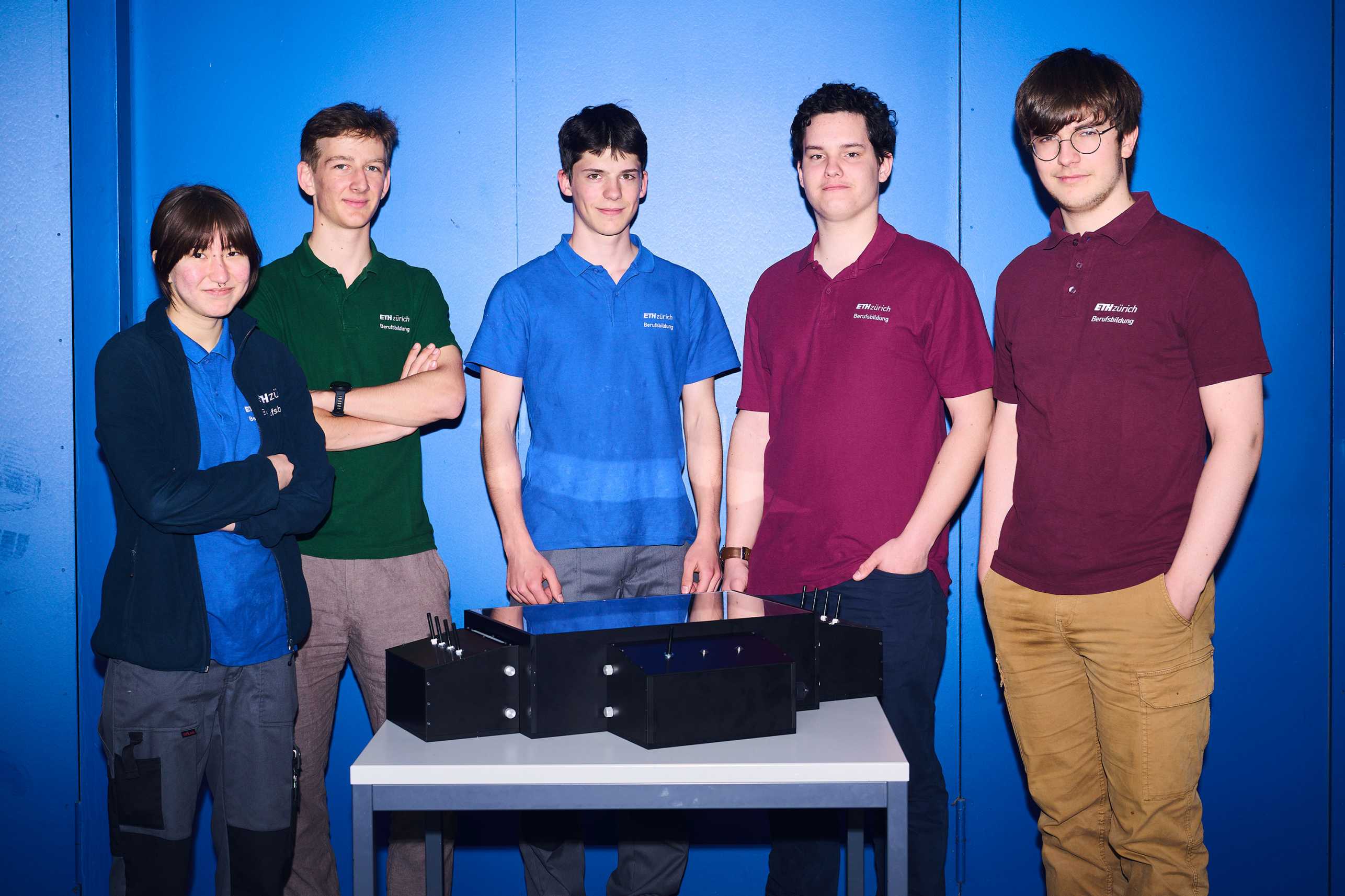
As not all team members were always available at the same time, collaboration within the team had to be coordinated and a schedule for the project had to be drawn up. In retrospect, Jonas believes that his team's time planning was not precise enough; he would do this differently in future. But the exchange between the different apprenticeships also required attention, as everyone had their own profession-specific perspective, Laurin explains. The different knowledge of the individual apprenticeship years was another challenge, says Jonas. It is therefore not surprising that both teams emphasised the importance of good communication as an important insight at the final presentation. And keeping to the schedule.
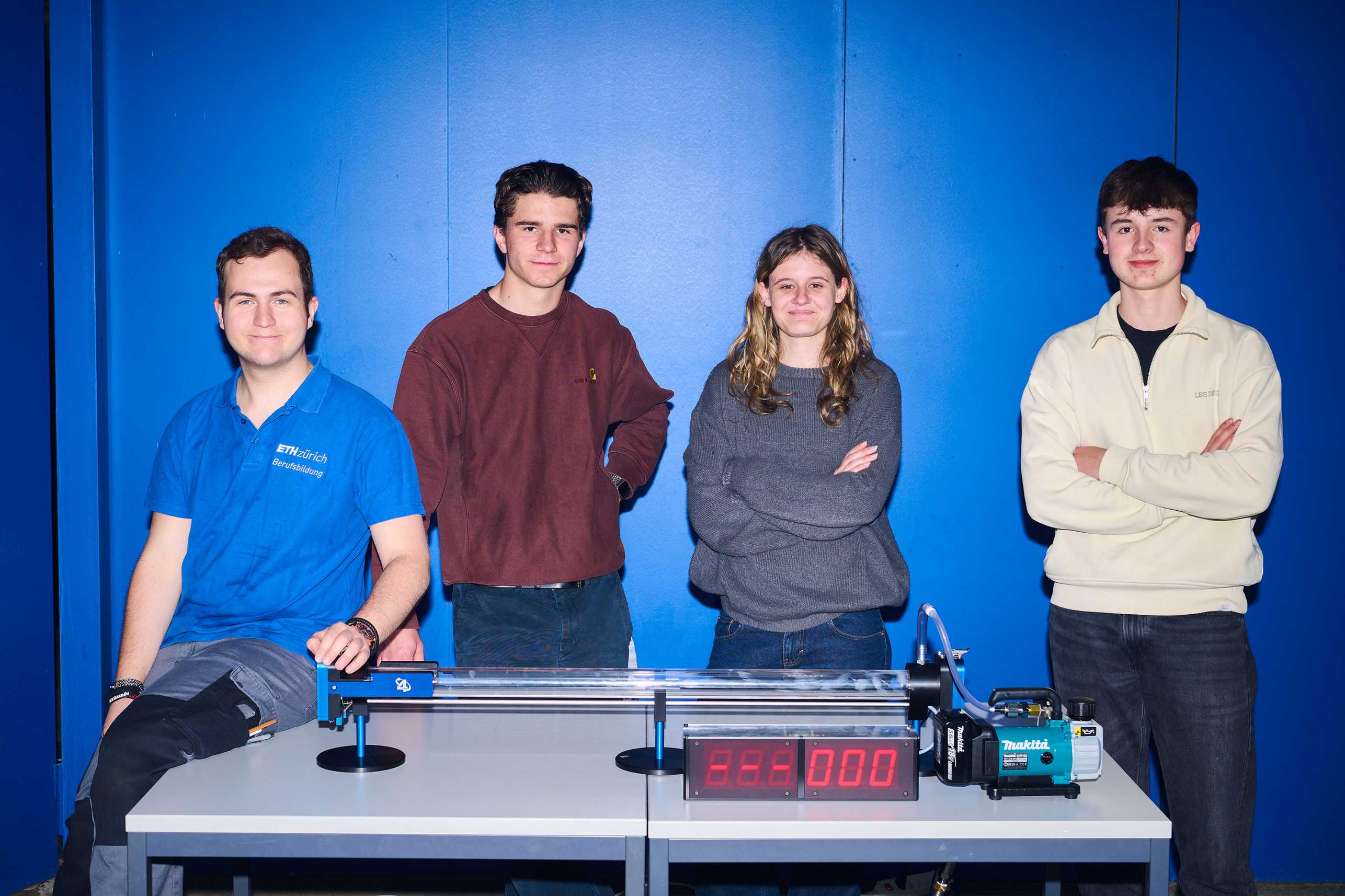
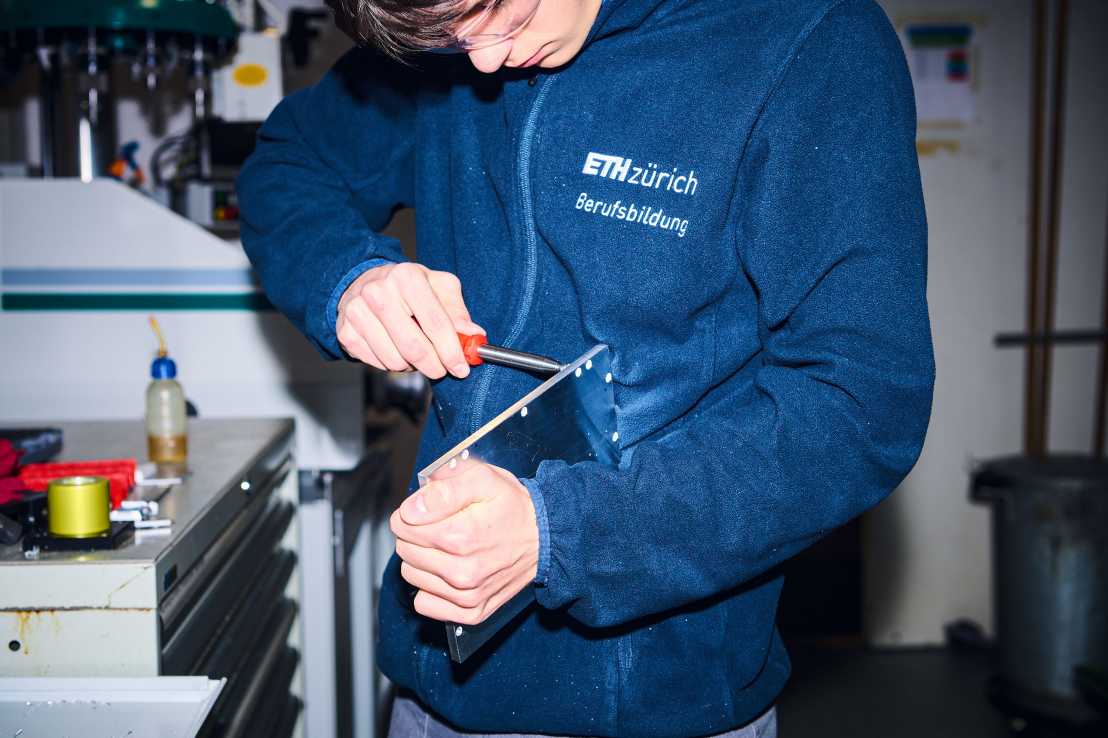
Both teams remember the best moment of their projects as the first time they worked. Even if not everything was perfect yet. Both teams received support in the production of the individual parts from apprentices in the training workshop and trainee electronics technicians also helped with the wiring and soldering.
In the end, there wasn't quite enough time and so the two projects were not quite finished at the final presentation. However, this is not a decisive factor for Physics4mation. The actual aim of the project work is to gain new insights and reflect on them. And these goals have been achieved. The final work is now being completed so that the exhibits can be shown at the careers fair.
